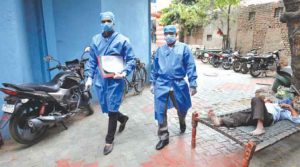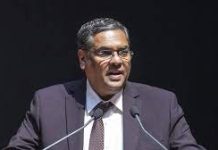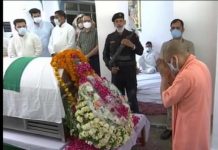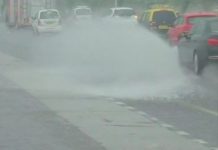 Some time ago when we (my younger brother and myself) went to our ancestral place, a village in UP’s Azamgarh district, my brother needed to consult a doctor. He had mild fever and we looked for a properly qualified allopath for treatment. We were told that we could not get any MBBS or MD degree holder doctor in the area. We would have to travel at least 10 km to find a properly qualified medical practitioner or a government-run medical care centre. The district hospital was at least 45 km away.
Some time ago when we (my younger brother and myself) went to our ancestral place, a village in UP’s Azamgarh district, my brother needed to consult a doctor. He had mild fever and we looked for a properly qualified allopath for treatment. We were told that we could not get any MBBS or MD degree holder doctor in the area. We would have to travel at least 10 km to find a properly qualified medical practitioner or a government-run medical care centre. The district hospital was at least 45 km away.
When we asked some of the villagers how they managed to get dependable medical care, their answer showed their expectations: “A few years back a qualified allopath was nowhere to be found except in the district town. Today the situation is much better and we consider ourselves luckier than people in many other areas where a sick person can hope to get proper medical care only after covering a long distance to reach the district town.”
When this is the reality, with a little variations here and there, could the country think of effectively handling a situation like the one caused by the coronavirus pandemic? It would have been a terrible situation had the government wasted a little more time to decide about the step it has taken to take on the Covid-19 pandemic, going ahead with a coercive yet unavoidable lockdown from March 25 to May 3. Even now one cannot be sure how effective the country-wide lockdown with social (or physical) distancing and other precautions will prove to be once the workers who have shifted to their villages and the others trying to reach their ancestral places are asked to undergo medical tests for Covid-19 infection. That situation is likely to arise in the near future and it would put the country’s medical care system to greater strain.
Much of what is being done to contain the pandemic is confined to cities. Luckily, the villages and small towns appear to be safer, but the nation cannot afford to be complacent. Chances of many of the migrant workers who have reached their villages with coronavirus infection cannot be ruled out. But the problem is how to establish whether they are Covid-19 carriers when there are not enough testing kits available in the country.
Even in cities like Delhi, which has been at the second place after Maharashtra on the list of coronavirus cases, 42,000 rapid testing kits were made available to health experts on April 18. With this, the number of Covid-19 positive cases has begun to rise alarmingly with many apparently healthy people found to have been carrying the coronavirus. These are mostly asymptomatic cases, which indicate that the stage of community-transmission of the deadly virus may have arrived, though health experts are yet to confirm it. Let us hope that alarming stage has not come yet as it would make the situation more complicated.
Some Indian companies are producing testing kits but the requirement is too high to be met locally. That is why India placed an order for 1.5 million testing kits from China even at the risk of their quality not meeting international standards. India has also sought 15 million pieces of personal protection equipment (PPEs) from China to ensurethat the threat of infection being faced by health care personnel is minimised. The focus has to be on quick testing and safety of health professionals so that the efforts to contain the coronavirus infection are not weakened.
While the government is doing what it can to effectively meet the threat posed by the Covid-19 pandemic, what are the lessons which need to be learnt by the authorities concerned?
The health sector must get top priority on the government’s agenda keeping in view the helplessness shown by even the most advanced nations, health care wise, like the US and Italy in the face of the Covid-19 onslaught. The health sector allocation in the 2020 Union budget was less than 1 per cent of the GDP (67,484 crore, a little more than the revised estimate of 63,830 crore in the previous year) though the target was reportedly 2.5 per cent. This is too little to enable the country to have adequate health care facilities.
Compared to this, the health care expenditure in China in 2018 stood at 6 trillion yuan, a huge increase from the figure in 2000 — 500 billion yuan. Let us keep aside China as it is a communist dictatorship. Italy, which found it very difficult to face the crisis caused by the Covid-19 pandemic, spends as much as 9.2 per cent of that country’s GDP ($3,200 per capita in real terms). The US is far ahead of the other nations in the developed world with a health sector expenditure of 18 per cent of the GDP or $3.5 trillion (2017 figures) and $1.5 trillion comes directly or indirectly from the federal government.
Given the facilities available to contain the contagion, the exact picture of effectiveness of the country-wide lockdown may be known by May 3, when the average incubation period — two-three weeks — of the virus will be over. As the situation prevails today, it is difficult to believe that the Covid-19 threat will cease to be scary by then.
The removal of some of the restrictions on April 20 provides proof that the coercive measure, implemented on March 25, cannot be continued for a longer period.
Interestingly, a group of scientists associated with the Indian Council of Medical Research ((ICMR), involved in the fight against the coronavirus, had in a comprehensive study, opposed the lockdown as an effective measure to contain the pandemic, describing it as a “drastic public health care measure”. The experience gained since March 25 shows that the lockdown has helped meet the threat to a considerable extent, but the cost is too heavy to pay.
The cost could have been much lower than what the nation has paid if the authorities could have resorted to a lockdown, a very tough measure no doubt, immediately after March 3 when quite discernible escalation of coronavirus infection was noticed. There was enough time available from January 30 — when India recorded the earliest cases of Covid-19 infection — to March 3 for the authorities to foresee an unprecedented health crisis fast approaching the country. But, alas, they could not or preferred to look the other way owing to some pressing political reasons. How sad, indeed!
letters@tehelka.com












